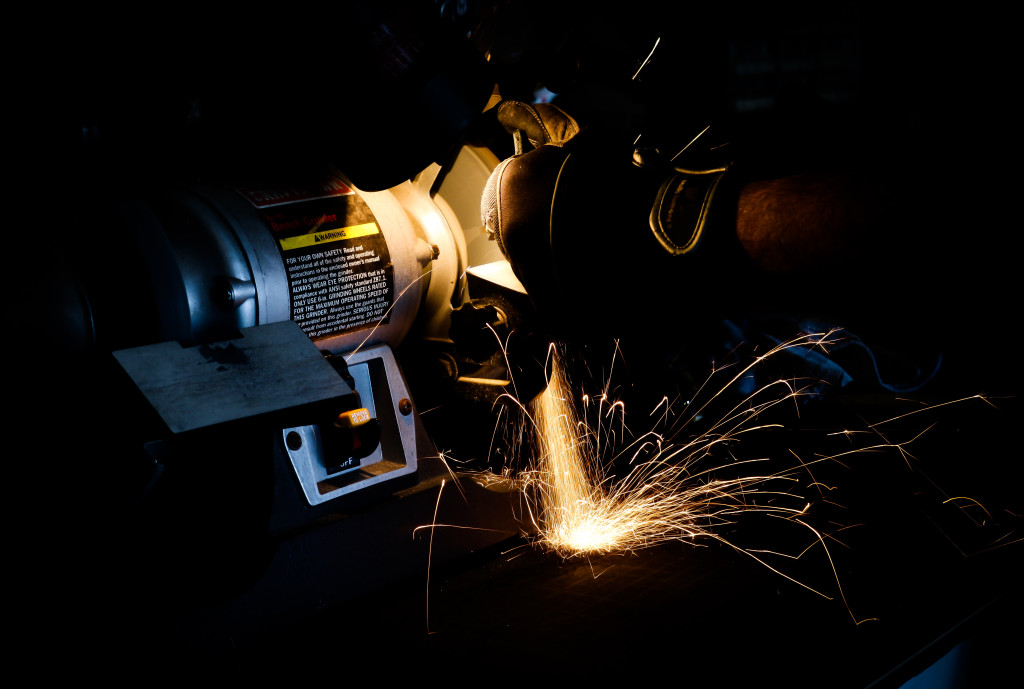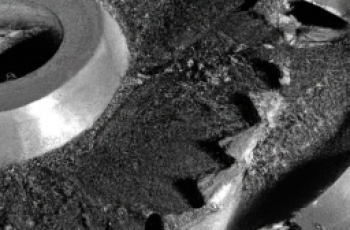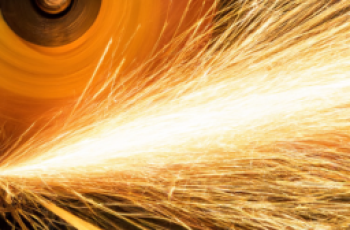In this article, you will discover the importance of proper bench grinder tool rest adjustments. We all know that a bench grinder is a handy tool for sharpening and shaping various objects, but did you know that the tool rest plays a crucial role in ensuring accurate and safe grinding? By understanding how to adjust the tool rest correctly, you can achieve precise results and minimize the risk of accidents. So, let’s explore the world of bench grinder tool rest adjustments and unlock the full potential of this indispensable tool in your workshop.
1. Importance of Bench Grinder Tool Rest Adjustments
1.1 Ensuring Proper Grinding
The proper tool rest adjustment on a bench grinder is essential for achieving accurate and efficient grinding results. By adjusting the tool rest, you can ensure that the grinding wheel is aligned to the desired angle and height, allowing you to achieve precise grinding and sharpening of various tools and materials. Whether you are a professional or a hobbyist, having a properly adjusted tool rest will greatly improve the quality and consistency of your work.
1.2 Enhancing Safety
Another crucial aspect of tool rest adjustments is enhancing safety during grinding operations. A well-adjusted tool rest provides stability and support for the workpiece, minimizing the risk of accidents such as slips or the workpiece getting caught in the grinding wheel. It allows you to maintain a safe distance between your hands and the wheel, reducing the chances of injury. By taking the time to adjust the tool rest correctly, you are prioritizing your safety and creating a safer working environment.
1.3 Extending Tool Life
Proper tool rest adjustments not only improve grinding accuracy and safety but also help extend the life of your bench grinder and the tools you are working on. When the tool rest is correctly aligned, the grinding wheel wears down evenly, preventing excessive wear on one side of the wheel. Additionally, by maintaining a consistent grinding angle, you can avoid unnecessary wear and tear on your tools, ensuring they last longer and perform optimally.
2. Understanding the Anatomy of a Bench Grinder Tool Rest
2.1 Base
The base of the tool rest is the foundation that attaches to the bench grinder itself. It provides stability and support for the entire tool rest assembly, ensuring that it stays firmly in place during use. The base typically features bolt holes or clamps that allow you to securely attach it to the grinder.
2.2 Adjustment Knob
The adjustment knob is a crucial component that allows you to make precise adjustments to the position and angle of the tool rest. It is usually located on the side or front of the tool rest assembly, and turning the knob allows you to move the tool rest horizontally or vertically, depending on your desired adjustment.
2.3 Tool Rest Wheel Support
The tool rest wheel support is the part of the assembly that holds the grinding wheel in place. It is usually made of sturdy metal and is designed to provide stability and support while allowing easy rotation of the grinding wheel.
2.4 Locking Mechanism
The locking mechanism is essential for securing the tool rest in the desired position once you have made the necessary adjustments. It may consist of a clamp, screw, or another type of locking device that prevents the tool rest from shifting or moving during grinding operations.
2.5 Rest Plate
The rest plate is the surface on which the workpiece is placed during grinding. It is typically made of metal and provides a flat, stable platform for supporting the workpiece. The rest plate usually extends out from the tool rest assembly and can be adjusted to different angles to accommodate various grinding requirements.
2.6 Distance Gauge
The distance gauge is a feature present in some tool rest assemblies. It helps you maintain a consistent distance between the grinding wheel and the rest plate, ensuring accurate and repeatable grinding results. The distance gauge is particularly useful when grinding tools that require precise edge alignment or specific bevel angles.

3. Preparing for Tool Rest Adjustments
3.1 Disconnecting Power
Before making any adjustments to the tool rest, it is crucial to disconnect the power supply to the bench grinder. This eliminates the risk of accidental engagement of the grinding wheel and protects you from potential harm. Always prioritize safety by unplugging the grinder or switching off the power source at the circuit breaker.
3.2 Cleaning the Tool Rest
To ensure smooth and accurate adjustments, it is essential to clean the tool rest thoroughly. Remove any debris, dust, or grinding residue that may have accumulated on the tool rest assembly. Use a soft brush or a compressed air canister to clean hard-to-reach areas.
3.3 Inspecting for Damage
Before proceeding with any adjustments, carefully inspect the tool rest and its components for any signs of damage or excessive wear. Check for cracks, loose parts, or bent components that may affect the performance and safety of the tool rest. If you notice any issues, it is best to address them before proceeding with adjustments or seek professional assistance if needed.
4. Basic Adjustments for Bench Grinder Tool Rest
4.1 Adjusting the Horizontal Angle
To adjust the horizontal angle of the tool rest, locate the adjustment knob and loosen it. Once loosened, you can slide the tool rest horizontally along the base to the desired position. Take care to align the rest plate parallel to the grinding wheel for accurate and consistent grinding results. Once you have achieved the desired angle, tighten the adjustment knob to lock the tool rest in place.
4.2 Adjusting the Vertical Height
To adjust the vertical height of the tool rest, locate the adjustment knob responsible for vertical positioning. Loosen the knob and move the tool rest up or down, depending on the required height. Ensure that the rest plate is positioned at a suitable height to allow proper contact between the workpiece and the grinding wheel. Once you have achieved the desired height, tighten the adjustment knob to secure the tool rest.
4.3 Setting the Tool Rest Distance
If your tool rest assembly includes a distance gauge, setting the appropriate distance is crucial for accurate grinding results. Refer to the manufacturer’s guidelines or the specifications of the tool you are working on to determine the ideal distance between the grinding wheel and the rest plate. Adjust the distance gauge accordingly and ensure that it is securely locked in place before proceeding with grinding operations.

5. Advanced Techniques for Fine-Tuning Tool Rest Adjustments
5.1 Using Protractors and Angle Gauges
For those seeking precise and consistent grinding angles, using protractors and angle gauges can be beneficial. These measuring tools help you achieve accurate and repeatable angle adjustments on the tool rest. Simply position the measuring tool against the grinding wheel or rest plate to determine the angle and make any necessary adjustments to the tool rest assembly.
5.2 Utilizing Vernier Scales
Vernier scales are another useful tool for fine-tuning tool rest adjustments. These scales provide incremental measurements that allow for precise adjustments to be made. By incorporating a vernier scale into your grinding setup, you can achieve highly accurate and repeatable adjustments, ensuring optimal grinding results for various tools and materials.
5.3 Making Micro-Adjustments
In some cases, achieving the perfect tool rest adjustment may require making small, incremental changes. Micro-adjustments can be made by loosening the adjustment knobs slightly and tapping the tool rest gently into the desired position. By applying small adjustments and regularly checking the alignment, you can achieve fine-tuned tool rest settings that meet your specific grinding requirements.
6. Common Mistakes to Avoid
6.1 Improper Tool Rest Alignment
One common mistake to avoid is improper tool rest alignment. Failing to align the rest plate parallel to the grinding wheel can lead to inconsistent and inaccurate grinding results. Take the time to ensure that the tool rest is properly aligned before locking it in place.
6.2 Overlooking Stability
Stability is crucial when it comes to tool rest adjustments. Failing to secure the tool rest tightly can result in unexpected movement during grinding, compromising both accuracy and safety. Always double-check that the adjustment knobs are tightened properly to prevent any unintentional shifts or slips.
6.3 Neglecting Regular Maintenance
Regular maintenance is essential for the longevity and performance of your bench grinder and tool rest. Neglecting to clean the tool rest assembly or inspect it for damage can lead to issues with adjustability and stability over time. Make it a habit to clean, lubricate, and inspect your tool rest regularly to ensure it functions optimally.

7. Safety Guidelines for Tool Rest Adjustments
7.1 Wearing Personal Protective Equipment
When adjusting the tool rest on a bench grinder, it is crucial to prioritize your safety. Always wear appropriate personal protective equipment, including safety glasses or goggles, a face shield, and gloves. These safety measures will protect you from any potential flying debris or accidental contact with the grinding wheel.
7.2 Keeping Hands and Clothing Clear
Ensure that your hands and clothing are kept clear of the grinding wheel, tool rest, and any moving parts of the bench grinder. Avoid wearing loose-fitting clothing or jewelry that could get caught in the machinery. Keep a safe distance between your hands and the grinding wheel to prevent accidents or injuries.
7.3 Using Proper Grinding Techniques
A properly adjusted tool rest alone cannot guarantee safety during grinding. It is equally important to use proper grinding techniques. Always hold the workpiece securely and flat against the rest plate, ensuring proper contact with the grinding wheel. Avoid applying excessive pressure or grinding at high speeds, as this can lead to overheating and potential damage to the tool or grinding wheel.
7.4 Avoiding Overheating
Overheating of the workpiece or grinding wheel can occur if adjustments are not made correctly or if the grinding process is prolonged. To prevent overheating, take breaks between grinding sessions to allow the equipment to cool down. Additionally, ensure that the workpiece is properly cooled and lubricated during grinding operations, especially when working with heat-sensitive materials.
8. Troubleshooting Common Tool Rest Adjustment Issues
8.1 Tool Rest Slipping Out of Position
If you find that your tool rest keeps slipping out of position, check the adjustment knobs for proper tightness. If the knobs are not tightened securely, vibrations and grinding forces can cause the tool rest to shift. Ensure that the adjustment knobs are tightened firmly to prevent any undesired movement.
8.2 Difficulty Locking the Adjustments
If you are experiencing difficulty locking the adjustments in place, there may be an issue with the locking mechanism. Inspect the mechanism and ensure that it is not damaged or worn. Lubricate the locking mechanism if necessary, as this can improve its functionality. If the issue persists, consult the manufacturer’s instructions or seek professional assistance.
8.3 Uneven Grinding Results
Uneven grinding results may indicate an alignment problem with the tool rest. Double-check the alignment of the rest plate and the distance between the grinding wheel and the rest plate. It is possible that adjustments were not made accurately or that the tool rest has become misaligned over time. Make the necessary corrections to achieve the desired grinding results.
9. Tips for Maintaining Bench Grinder Tool Rest
9.1 Regular Cleaning
To maintain optimal performance, clean the tool rest assembly regularly. Remove any accumulated debris or grinding residue using a soft brush or compressed air canister. Periodically dismantle the assembly if possible and clean each component thoroughly. This will prevent buildup and ensure smooth adjustments.
9.2 Lubrication
Apply lubrication to any moving parts or adjustment knobs to ensure smooth operation. Lubricating the tool rest assembly will prevent it from becoming stiff or difficult to adjust. Use a light machine oil or a recommended lubricant based on the manufacturer’s instructions.
9.3 Inspection and Replacement
Regularly inspect the tool rest for any signs of damage or excessive wear. Check for cracks, bent components, or loose parts that may affect functionality or safety. If you identify any issues, repair or replace the affected parts promptly. By addressing problems early on, you can prevent further damage and ensure the longevity of your bench grinder and tool rest.
10. Conclusion
Proper tool rest adjustments are vital for achieving accurate grinding results, enhancing safety, and extending the life of your bench grinder and tools. By understanding the anatomy of a tool rest and following the necessary steps for adjustments, you can optimize your grinding experience. Remember to prioritize safety, regularly maintain your tool rest, and seek professional assistance or consult manufacturer guidelines if needed. With the right adjustments and care, your bench grinder tool rest will support you in achieving precise and efficient grinding for years to come.



